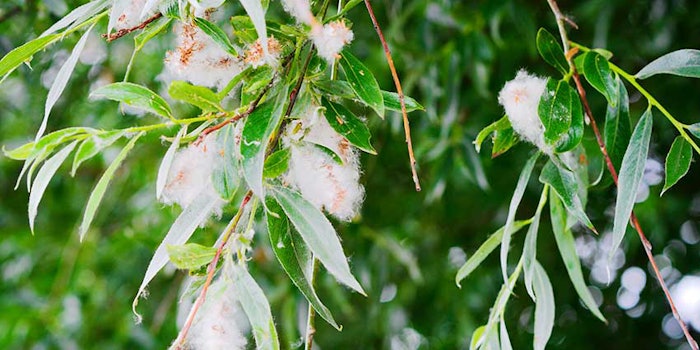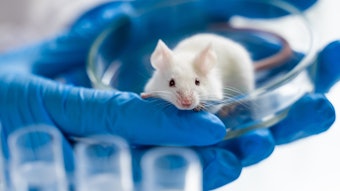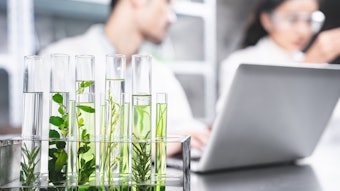
Until recently,1 the development of a botanical ingredient for cosmetic use has been a long and tedious process. This was typically initialized by defining the mechanism of action, which is sometimes based on the interactions of users with plants, i.e., ethnobotanical influences, including diverse popular and cultural traditions;2, 3 in addition to determining the endpoints to be evaluated to screen the ingredient for performance; and searching the available literature to identify natural sources for some molecules that already have been described as having effects on those endpoints. After the initial theoretical prospecting using literature or popular knowledge, the development process of the botanical ingredient finally begins.
The traditional process also must consider the extraction procedure, e.g., whether molecules of interest will be isolated or concentrated; the loss of bioactivity that commonly occurs during the purification process; and limitations for the early dereplication of known or otherwise uninteresting compounds. Once the ingredient is obtained, at least on a laboratory scale, it is characterized for its composition through classical analytical technologies such as high performance liquid chromatography (HPLC) and/or gas chromatography (GC), which, for example, may be coupled to ultraviolet (UV) photodiode array detection, and/or to mass spectrometry (MS), to provide the mass and UV spectrum to compare with databases and identify the compounds.4 Moreover, liquid chromatography (LC) combined with MS, UV and nuclear magnetic resonance (NMR), using techniques such as LC/UV, LC/MS, LC/MS/MS and LC/NMR, quickly provide structural information with minimal amounts of the compounds required.5 After the phytochemical characterization, performance screenings are executed based on the pre-determined endpoint.
Considering that the only discoveries made from this process mainly corroborate what has already been described in the literature, or in cultural or popular uses of the plants, with the exception perhaps of identifying a new natural source for the molecules of interest, the process does not appear very innovative. Moreover, when the botanical ingredient does not show good efficacy on the pre-determined endpoints, its development is usually abandoned. Or, its procurement process is redesigned so that the whole process starts again, and restarting the process incurs not only a loss of resources due to the great diversity of chemical compounds and molecules in those resources—beyond the ones initially sought—but also the loss of a huge potential to regulate other biological pathways and endpoints that were not considered from the beginning.
In fact, botanical ingredients are interesting due to their complementary chemical diversities, which are unique and may act synergistically upon a biological target. They also have been an inspirational source for more than half of the new drugs introduced to the market in the past 25 years.6 For instance, the white willow Salix alba was the original source for aspirin, and the most well-known cancer drug, paclitaxela, was originally obtained from the bark of the Pacific yew tree. In this latter case, some 10,000 trees were harvested to supply just 2.5 kg of the material for clinical testing, which seriously threatened populations of Pacific yews.4 Consequently, the only viable and sustainable way to keep this drug on the market was to develop a synthetic alternative. Therefore, the interest in discovering new natural products declined and new technologies to search for drug candidates, such as combinatorial chemistry, attracted the pharmaceutical industry.
As a consequence, most of the available libraries for screening new active candidates in general are purified and synthetic compounds. Nevertheless, pure compound libraries will never be a real substitute for the huge structural diversity found in extracts. In particular, trace components are interesting potentially as major constituents, which are likely to be absent in such collections. So while the true potential of botanicals may be revealed by understanding their constituents and pathways to activity, traditional means to develop such ingredients are insufficient.
Understanding Pathways
The comprehension of cellular and molecular pathways related to human life and health is currently one of the biggest challenges of science. Thus, cellular and molecular biology tools and techniques have progressively been developed and sophisticated to advance research in this area; however, these techniques are still limited due to the high complexity of biological systems.7 Nevertheless, advances in molecular biology and genomics have made massive improvements in understanding the relevant biological pathways for the pharmaceutical, biotechnological and cosmetics industries.
There also have been several discoveries on new endpoints along these pathways, as well as some elucidation about their connections and interactions. Autophagy, for example, is an integral biological process, important in cellular and organism health and involved in diseases such as Alzheimer’s and cancer. 8 Much progress has been made in understanding the molecules involved in this process and how it is regulated, which has been described elsewhere.8 However, it is still unclear whether specific reactive oxidative species elicit specific autophagic responses, besides being sensitive to autophagic levels and intracellular and extracellular locations.8
While analysis, purification and structure elucidation of natural products have experienced a technological breakthrough over the past decade, tracking bioactivity in complex matrices such as plant extracts remains a highly challenging task. However, this new scientific data has brought about the need for new and more relevant molecular studies related to the safety and efficacy of therapeutic compounds, including botanical extracts, which may actually present multifunctional benefits due to their interactions with different biological pathways. The most important evolutions in technologies for biological processes analysis in the past two decades have led to a constant flow of information, data and unthinkable discoveries. The sequencing of the human genome, the use of high throughput screening (HTS) techniques including DNA microarray and the so-called next-generation sequencing, and HTS to predict the safety and efficacy of therapeutic compounds may be considered main events of this transformation.
Completed in 2003, human genome sequencing identified approximately 25,000 genes in human DNA9 and this was the starting point for a revolution in the study and comprehension of human biology and physiology. The “postgenomic era” holds phenomenal promise for identifying the mechanistic bases of organismal development, metabolic processes, and diseases, mainly due to the development of what has been referred to as omics;10, 11 this comprises molecular biology tools such as genomics, e.g., sequencing tools; transcriptomics, e.g., DNA microarray, including epigenomics; proteomics, e.g., two-dimensional difference gel electrophoresis (2D-DIGE); mass spectroscopy and metabolomics, e.g., nuclear magnetic resonance (NMR); and mass and infrared spectroscopy. However, the more relevant the tool from a biological and physiological point of view, the more expensive and less commercially available it is for high throughput screening of an active ingredient (see Figure 1).
Although these techniques allow for the evaluation of several molecular and metabolic pathways simultaneously, the worldwide challenge is to correlate the huge amount of information obtained with the cellular behavior and potential therapeutic pathways though bioinformatics. This involves integrating mathematics, computing engineering and biology to connect biological, chemical and other relevant data in order to better understand the biological complexity. This step is the most time-consuming within the largescale screening strategy, along with the validation of the chosen endpoints and biological targets.12
High Throughput Screening
Here, the approach known as high throughput screening warrants a discussion. The term itself has been used in the cosmetic area for the past few years but mostly in reference to large-scale studies using traditional omics tools such as DNA arrays. Historically, HTS is a multiparametric analysis that was developed in the 1970s by the pharmaceutical industry using a robotic and automated system for data processing, liquid handling and ultrasensitive detectors.13 This strategy was responsible for changing the way new drugs were developed, speeding the process considerably but as a consequence, as already described, this led concentrated efforts toward the generation and exploitation of synthetic chemical libraries, abandoning the search for new natural products.
Despite the speed of synthesis, combinatorial chemistry has not yielded an increased number of new drugs in recent years,14 so the natural evolution is to return to the beginning and seek botanical inspiration. Since botanicals are produced in nature, it is correct to assume that their functions have naturally evolved to be more effective. In fact, the generation of natural chemical diversity has occurred within the context of biological utility. Thus, it is comprehensible to expect that every molecule in a botanical ingredient has its specific function and may hold therapeutic promise, once properly screened.
Natural and botanical ingredients continue as a trend in the cosmetics industry worldwide.15 In 2011 alone, more than 14,000 new products containing botanical ingredients were launched globally16 whereas in 2005, the number was only around 1,300. Therefore, a diversity of botanical ingredients has been developed for the cosmetic industry due to the need for constant innovation. In relation, the organization of botanical ingredients into a library for HTS is relevant for the market, especially considering the aggression with which such collections are sought.17
However, for HTS, omics analysis or a library of botanical ingredients, it is indispensable to have good phytochemical characterization to identify and quantify the major chemical groups and their main compounds.18 This is challenging, as published studies using botanical therapies for various purposes, including for cosmetic benefits, demonstrate, since they have fairly been criticized for their lack of quality assurance and reproducibility of the extracts.19 Lot-to-lot variability is a major issue for any botanical extract and various factors may contribute to this, such as correct botanical identification and authentication; the lack of a sustainable, ecologically responsible and economically viable supply chain; and the lack of knowledge regarding harvesting and growing conditions.4, 19
Complete characterization is also important to identify common natural compounds or contaminants such as pesticides and heavy metals that may interfere with the assay. Saponins, widely found naturally in plants, have the tendency to disrupt membranes due to their detergentlike property, giving a misleading result on cell-based assays.4 Pigments, UV quenchers and auto-fluorescing compounds such as phytoalexins are also prone to interfering with the readouts of assays based on light measurements. Tannins, which are chelating agents, form complexes with a variety of proteins and polysaccharides, often giving a false-positive result in most assays involving purified proteins.4
Therefore, HTS detection technology and results interpretation will depend strongly on botanical extract characterization in order to overcome some of the difficulties the researcher will find during the screenings. Also of utmost importance is the validation of the analytical methods used for phytochemistry characterization. In general, validation investigations must include studies on specificity, linearity, accuracy, precision, range, detection and quantitative limits, depending on whether the analytical method used is qualitative or quantitative.20 Guidelines from the US Pharmacopeia, the International Conference on Harmonization (ICH), and the US Food and Drug Administration (FDA) provide a framework for performing such validations. Characteristic plant constituents are seldom available commercially and may be used as standards.
Thin liquid chromatography (TLC), HPLC and CG are the main analytical techniques used.21 Sometimes a liquid chromatography/mass spectroscopy approach can be referred to as a mode of characterization as well as others such as NMR. Going one step further, after isolation of a compound, elucidations to prove its definite structure will not be easy. The method employed is often to use readily available compounds that behave similarly in the chosen chromatographic systems, and to calculate retention values and/or times toward these compounds as a standard. In cases when active ingredients are not known or too complex, the quality of plant extracts can be assessed by a “fingerprint” chromatogram.21
Finally, it is necessary to guarantee the legitimacy of the obtained results through quality assurance and reproducibility of the botanical extract. Thus, adequately characterizing the botanical extract as well as tracing the supply chain, including harvesting and growing conditions, are obligatory steps to take before applying such large-scale techniques. In fact, it is well-known that every botanical ingredient should have a seasonality study21 in which the phytochemistry of the plant sample is determined under different locations and climate conditions; e.g., from sunny, shaded or rainy conditions, with samples every month for at least for one year. Such analysis will determine the best conditions for obtaining the ingredient and will help to guarantee its final quality.21
Moreover, all performance analysis should be repeated on at least three different batches with a good amount of replication per batch and per endpoint in order to overcome common statistic deviations in these performance assays. Indeed, it is advisable in this scientific approach to have an experimental design considering all variables in order to determine the number of replications necessary to obtain reliable statistic results.
Opportunities
The clear advantage of HTS techniques is the possibility to screen as many botanical ingredients as possible for a huge number of endpoints and mechanisms at a fast pace and with reasonable costs, compared with the traditional way to establish mechanisms of action for botanical ingredients. In fact, the total cost of using this approach, including qualified people, reagents and laboratory structures, is 10–20% more than techniques that do not allow for the large-scale screening of so many ingredients, such as enzyme-linked immunosorbent assay (ELISA) and Western blot.22 However, this cost may be considered a realistic investment when considering the speed of obtaining a massive quantity of results and the potential to discover the multifunctionality of the ingredients or their fractions. Moreover, since there is no need to focus on just a few endpoints or mechanisms, the success rate might be improved with this strategy.
Additionally, as the cosmetic and personal care market has developed the skills for botanical ingredients development, it should consider sharing its knowledge with other markets such as pharmaceutical, to leverage the utilization of such rich chemical biodiversity in exchange for the knowledge of HTS techniques to accelerate the development process and, consequently, the innovation. Still, many improvements are yet required in characterizing botanical ingredients to avoid some of the pitfalls described and make the HTS of botanicals accurate.
Conclusions
Natural products, with their complex chemical diversity, interact with a wide variety of proteins and other biological targets, acting also as modulators of several cellular processes. This chemical complexity does create a challenge when prospecting their potential applications and biological activity. However, HTS is a tool that can assist product developers in this challenge, and although there are drawbacks and difficulties of applying HTS techniques on botanical extracts, this approach seems to be the most encouraging way to understand the therapeutic potential of the complex botanical biodiversity, once the challenges of setting up the assays and the phytochemical characterization are overcome.
References
- B Schmidt, DM Ribnicky, A Poulev, S Logendra, WT Cefalu and I Raskin, A natural history of botanical therapeutics, Metabolism (57)7 S3–S9 (2008)
- N Turner, Ethnobotany today in Northwestern North America, in: RE Schultes, S Von Reis, eds, Ethnobotany: Evolution of a discipline, Dioscorides Press, Portland, OR (1995) pp 264–283
- WC McClatchey, GB Mahady, BC Bennett, L Shiels and V Savod, Ethnobotany as a pharmacological research tool and recent developments in CNS-active natural products from ethnobotanical sources, Pharmacol Ther (123)2 239–254 (2009)
- O Potterat and M Hamburger, Drug discovery and development with plant-derived compounds, in: F Petersen and R Amstutz, Progress in drug research: Natural compounds as drugs, vol I, sl: Birkhäuser Verlag AG (2008) pp 47–118
- G Molinari, Natural products in drug discovery: Present status and perspectives, in: CA Guzmán and GZ Feuerstein, Pharmaceutical Biotechnology, Landes Bioscience, and Springer Science and Business Media (2009) pp 13–26
- National Institutes of Health, Nature: The master medicine-maker, Life Science (May 4, 2011)
- F Zanella, JB Lorens and W Link, High content screening: Seeing is believing, Trends in Biotechnology (28)5 (2010)
- J Lee, S Giordano and J Zhang, Autophagy, mitochondria and oxidative stress: Cross-talk and redox signaling, Biochem J (441) 523–540 (2012)
- FS Collins, M Morgan and A Patrinos, The human genome project: Lessons from largescale biology, Science (300) 286–290 (2003)
- RLCH Huzarewich, CG Siemens and SA Booth, Application of “omics” to prion biomarker discovery, J Biomed Biotechnol 1–14 (2010)
- SH Kim, D Fourmy and T Fujii, Expanding the horizons for single-cell applications on lab-on-a-chip devices, Methods Mol Biol (853) 199–210 (2012)
- High-tech business decisions, High Throughput Screening 2010: Effective Strategies, Innovative Technologies, and Use of Better Assays, San Jose, CA (2010)
- LM Mayer and P Fuerst, The future of high-thoughput screening, J Biomolecular Screening (13) 443–448 (2008)
- JW Li and JC Vederas, Drug discovery and natural products: End of an era or an endless frontier? Science (325) 161–165 (2009)
- Mintel Global New Products Database (GNPD) Review, Innovation and Trends in Health and Hygiene 1–17 (2011)
- Mintel Global New Products Database (GNPD), product search (May 31, 2012)
- NineSigma request 66813, Seeking Natural Compound Collections for Screening (Feb 2011)
- FE Koehn, High impact technologies for natural products screening, in: F Petersen and R Amstutz, Progress in Drug Research: Natural Compounds as Drugs, Vol I, sl: Birkhäuser Verlag AG (2008) pp 177–210
- DM Eisenberg et al, Developing a library of authenticated Traditional Chinese Medicinal (TCM) plants for systematic biological evaluation— Rationale, methods and preliminary results from a Sino-American collaboration, Fitoterapia (82) 17–33 (2011)
- RJ Ko et al, Lethal ingestion of Chinese herbal tea containing ch’an su, West J Med (164) 171–175 (1996)
- WM Bandaranayake, Quality control, screening, toxicity and regulation of herbal drugs, in: I Ahmad, F Aqil and M Owais, Modern Phytomedicine. Turning Medicinal Plants into Drugs, Wiley-VCH Verlag GmbH and Co. KGaA, Weinheim (2006) pp 25–56
- R Macarrón and RP Hertzberg, Design and implementation of high-throughput screening assays, in: WP Janzen and P Bernasconi, High Thouput Screening: Methods and Protocols, Humana Press, New York (2009) pp 1–32





!['We believe [Byome Derma] will redefine how products are tested, recommended and marketed, moving the industry away from intuition or influence, toward evidence-based personalization.' Pictured: Byome Labs Team](https://img.cosmeticsandtoiletries.com/mindful/allured/workspaces/default/uploads/2025/08/byome-labs-group-photo.AKivj2669s.jpg?auto=format%2Ccompress&crop=focalpoint&fit=crop&fp-x=0.49&fp-y=0.5&fp-z=1&h=191&q=70&w=340)




